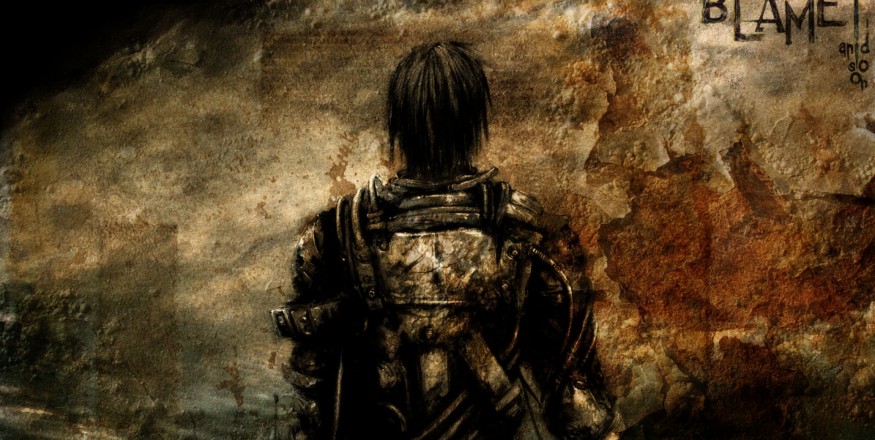The Lesser Key of Solomon, also known as Clavicula Salomonis Regis or Lemegeton, is an anonymous grimoire (or spell book) on demonology. It was compiled in the mid-17th century, mostly from materials a couple of centuries older. It is divided into five books—the Ars Goetia, Ars Theurgia-Goetia, Ars Paulina, Ars Almadel, and Ars Notoria.1086Please respect copyright.PENANAQF0tdYzehw
Ars Goetia1086Please respect copyright.PENANApZeNZc41WE
The most obvious source for the Ars Goetia is Johann Weyer's Pseudomonarchia Daemonum in his De praestigiis daemonum. Weyer does not cite, and is unaware of, any other books in the Lemegeton, indicating that the Lemegeton was derived from his work, not the other way around. The order of the spirits was changed between the two, four additional spirits were added to the later work, and one spirit (Pruflas) was omitted. The omission of Pruflas, a mistake that also occurs in an edition of Pseudomonarchia Daemonum cited in Reginald Scot's The Discoverie of Witchcraft, indicates that the Ars Goetia could not have been compiled before 1570. Indeed, it appears that the Ars Goetia is more dependent upon Scot's translation of Weyer than Weyer's work in itself. Additionally, some material was used from Heinrich Cornelius Agrippa's Three Books of Occult Philosophy, the Heptameron by pseudo-Pietro d'Abano, and the Magical Calendar.
Weyer's Officium Spirituum, which is likely related to a 1583 manuscript titled The Office of Spirits, appears to have ultimately been an elaboration on a 15th-century manuscript titled Le Livre des Esperitz (of which 30 of its 47 spirits are nearly identical to spirits in the Ars Goetia).
In a slightly later copy made by Thomas Rudd, this portion was labelled "Liber Malorum Spirituum seu Goetia", and the seals and demons were paired with those of the 72 angels of the Shemhamphorasch, who were intended to protect the conjurer and control the demons he summoned. The angelic names and seals were derived from a manuscript by Blaise de Vigenère, whose papers were also used by Samuel Liddell MacGregor Mathers in his works for the Hermetic Order of the Golden Dawn. Rudd may have derived his copy of Liber Malorum Spirituum from a now-lost work by Johannes Trithemius, who taught Agrippa, who in turn taught Weyer.
This portion of the work was later translated by S. L. MacGregor Mathers and published by Aleister Crowley under the title The Book of the Goetia of Solomon the King. Crowley added some additional invocations previously unrelated to the original work, as well as essays describing the rituals as psychological exploration instead of demon summoning.1086Please respect copyright.PENANAxMwKv18ilW
The Seventy-Two Demons
The demons' names (given below) are taken from the Ars Goetia, which differs in terms of number and ranking from the Pseudomonarchia Daemonum of Weyer. As a result of multiple translations, there are multiple spellings for some of the names, which are given in the articles concerning them.
1) King Bael1086Please respect copyright.PENANAHnSl0tAnAt
2) Duke Agares1086Please respect copyright.PENANALfl2QjeW7E
3) Prince Vassago1086Please respect copyright.PENANAA5seMAZosI
4) Marquis Samigina1086Please respect copyright.PENANAcSSXdp8PXD
5) President Marbas1086Please respect copyright.PENANALNFO9v9kYl
6) Duke Valefor1086Please respect copyright.PENANAs65SgrsxMK
7) Marquis Amon1086Please respect copyright.PENANAGbKJUZmoW8
8) Duke Barbatos1086Please respect copyright.PENANAFifrYs76xW
9) King Paimon1086Please respect copyright.PENANAbSJhe27ASM
10) President Buer1086Please respect copyright.PENANA67if3WYJ0m
11) Duke Gusion1086Please respect copyright.PENANAyeOMxVYucU
12) Prince Sitri1086Please respect copyright.PENANARu5r1FBtG4
13) King Beleth1086Please respect copyright.PENANAXgaFd3yNxQ
14) Marquis Leraje1086Please respect copyright.PENANA9XpvyOsqWJ
15) Duke Eligos1086Please respect copyright.PENANASSA1LAHsxv
16) Duke Zepar1086Please respect copyright.PENANAngTl31ztED
17) Count/President Botis1086Please respect copyright.PENANAiCZuRtKqSn
18) Duke Bathin1086Please respect copyright.PENANAq6CjHR4moe
19) Duke Sallos1086Please respect copyright.PENANAvOpauOPqzS
20) King Purson1086Please respect copyright.PENANAf2VVPtFe0e
21) Count/President Marax1086Please respect copyright.PENANAH3l74s3rk2
22) Count/Prince Ipos1086Please respect copyright.PENANAvj6FvTVDcd
23) Duke Aim1086Please respect copyright.PENANA9aKJJWcQDf
24) Marquis Naberius1086Please respect copyright.PENANArDFR9ugUmk
25) Count/President Glasya-Labolas1086Please respect copyright.PENANAUweeE3oefE
26) Duke Buné1086Please respect copyright.PENANAyKiuRUNh3Z
27) Marquis/Count Ronové1086Please respect copyright.PENANAm46rjlDh8Y
28) Duke Berith1086Please respect copyright.PENANAutnmpjvA5Y
29) Duke Astaroth1086Please respect copyright.PENANA4pLqrUiY9U
30) Marquis Forneus1086Please respect copyright.PENANALiYgRG5mNU
31) President Foras1086Please respect copyright.PENANAtTl0v31WHw
32) King Asmoday1086Please respect copyright.PENANAfebrBnrx3l
33) Prince/President Gäap1086Please respect copyright.PENANAC1xSTKblqD
34) Count Furfur1086Please respect copyright.PENANA4UVFL1Uwlv
35) Marquis Marchosias1086Please respect copyright.PENANAjaYicMIu2A
36) Prince Stolas1086Please respect copyright.PENANAbq6Z1WcEKl
37) Marquis Phenex1086Please respect copyright.PENANAwv436ayd3b
38) Count Halphas1086Please respect copyright.PENANAueNHYIY7ge
39) President Malphas1086Please respect copyright.PENANAei2fYmJyAK
40) Count Räum1086Please respect copyright.PENANAjFoZlS3HOC
41) Duke Focalor1086Please respect copyright.PENANA4yJLj3wJ0Q
42) Duke Vepar1086Please respect copyright.PENANA73hiaPKJPb
43) Marquis Sabnock1086Please respect copyright.PENANAtnRoAXNNRS
44) Marquis Shax1086Please respect copyright.PENANAnsxEd5YTNw
45) King/Count Viné1086Please respect copyright.PENANAZ3mBj7w35c
46) Count Bifrons1086Please respect copyright.PENANAGev4cOgtJ9
47) Duke Vual1086Please respect copyright.PENANAvPgm3ev4xn
48) President Haagenti1086Please respect copyright.PENANAOuW6CpVe0l
49) Duke Crocell1086Please respect copyright.PENANAAbc9K74NjI
50) Knight Furcas1086Please respect copyright.PENANAe1GoPt0Ncn
51) King Balam1086Please respect copyright.PENANAzsIs9HZvUD
52) Duke Alloces1086Please respect copyright.PENANA7IqkyKPgOJ
53) President Caim1086Please respect copyright.PENANAlMXLADAEod
54) Duke/Count Murmur1086Please respect copyright.PENANAXx9dwciRqE
55) Prince Orobas1086Please respect copyright.PENANAFmwJYLr1CD
56) Duke Gremory1086Please respect copyright.PENANANRydCOGakH
57) President Ose1086Please respect copyright.PENANAyCXN2DADeE
58) President Amy1086Please respect copyright.PENANAGvSRLKC1wP
59) Marquis Orias1086Please respect copyright.PENANAmuG6rQR0Ko
60) Duke Vapula1086Please respect copyright.PENANA6dkZn1s744
61) King/President Zagan1086Please respect copyright.PENANAGuSGKP03YU
62) President Valac1086Please respect copyright.PENANAMRirRlbzIM
63) Marquis Andras1086Please respect copyright.PENANAd27SC6H8DN
64) Duke Flauros1086Please respect copyright.PENANAewh19q4zLV
65) Marquis Andrealphus1086Please respect copyright.PENANAMm0KpNfc8R
66) Marquis Kimaris1086Please respect copyright.PENANABurhepdlGL
67) Duke Amdusias1086Please respect copyright.PENANAghIR7rAlb3
68) King Belial1086Please respect copyright.PENANAvWuqIktpJO
69) Marquis Decarabia1086Please respect copyright.PENANAxyXTKMxRTQ
70) Prince Seere1086Please respect copyright.PENANAvrSs6kyk9a
71) Duke Dantalion1086Please respect copyright.PENANADoevAbqpe9
72) Count Andromalius
The demons are described as being commanded by four kings of the cardinal directions: Amaymon (East), Corson (West), Ziminiar (North), and Gaap (South). A footnote in one variant edition instead lists them as Oriens or Uriens, Paymon or Paymonia, Ariton or Egyn, and Amaymon or Amaimon, alternatively known as Samael, Azazel, Azael, and Mahazael (purportedly their preferred rabbinic names).[10] Agrippa's Occult Philosophy lists the kings of the cardinal directions as Urieus (East), Amaymon (South), Paymon (West), and Egin (North); again providing the alternate names Samuel (i.e. Samael), Azazel, Azael, and Mahazuel. The Magical Calendar lists them as Bael, Moymon, Poymon, and Egin, though Peterson notes that some variant editions instead list '"Asmodel in the East, Amaymon in the South, Paymon in the West, and Aegym in the North"; "Oriens, Paymon, Egyn, and Amaymon"; or "Amodeo [sic] (king of the East), Paymon (king of the West), Egion (king of the North), and Maimon."1086Please respect copyright.PENANAfh5hxcmcCQ
Ars Theurgia Goetia1086Please respect copyright.PENANAJjSVt5Snvb
The Ars Theurgia Goetia mostly derives from Trithemius's Steganographia, though the seals and order for the spirits are different due to corrupted transmission via manuscript. Rituals not found in Steganographia were added, in some ways conflicting with similar rituals found in the Ars Goetia and Ars Paulina. Most of the spirits summoned are tied to points on a compass, four Emperors tied to the cardinal points (Carnesiel in the East, Amenadiel in the West, Demoriel in the North and Caspiel in the South), sixteen Dukes tied to cardinal points, inter-cardinal points, additional directions between those. There are an additional eleven Wandering Princes, totaling thirty one spirit leaders who each rule several to a few dozen spirits.1086Please respect copyright.PENANANIqiVaDyTK
1086Please respect copyright.PENANAMNtT5FWhgl
Ars Paulina1086Please respect copyright.PENANAyS86w63UCO
Derived from book two of Trithemius's Steganographia and from portions of the Heptameron, but purportedly delivered by Paul the Apostle instead of (as claimed by Trithemius) Raziel. Elements from The Magical Calendar, astrological seals by Robert Turner's 1656 translation of Paracelsus's Archidoxes of Magic, and repeated mentions of guns and the year 1641 indicate that this portion was written in the later half of the seventeenth century. Traditions of Paul communicating with heavenly powers are almost as old as Christianity itself, as seen in some interpretations of 2 Corinthians 12:2-4 and the apocryphal Apocalypse of Paul. The Ars Paulina is in turn divided into two books, the first detailing twenty-four angels aligned with the twenty-four hours of the day, the second (derived more from the Heptameron) detailing the 360 spirits of the degrees of the zodiac.1086Please respect copyright.PENANAdeeQeNDFc1
Ars Almadel1086Please respect copyright.PENANAO1U5jn97br
Mentioned by Trithemius and Weyer, the latter of whom claimed an Arabic origin for the work. A 15th-century copy is attested to by Robert Turner, and Hebrew copies were discovered in the 20th century. The Ars Almadel instructs the magician on how to create a wax tablet with specific designs intended to contact angels via scrying.1086Please respect copyright.PENANANOfIJLDscq
Ars Notoria1086Please respect copyright.PENANAzZahqQdQbB
The oldest known portion of the Lemegeton, the Ars Notoria (or Notory Art) was first mentioned by Michael Scot in 1236 (and thus was written earlier). The Ars Notoria contains a series of prayers (related to those in The Sworn Book of Honorius) intended to grant eidetic memory and instantaneous learning to the magician. Some copies and editions of the Lemegeton omit this work entirely; A. E. Waite ignores it completely when describing the Lemegeton. It is also known as the Ars Nova.1086Please respect copyright.PENANA3tN7IfVBIr
1086Please respect copyright.PENANAkNpTFuY62P
It has also been said to be the origin of Pandora's box and where the seven deadly sins were born.
1 Gula (gluttony)1086Please respect copyright.PENANAt1pzYKXBDe
2 Luxuria (lust, fornication)1086Please respect copyright.PENANAqLqZs6gMIk
3 Avaritia (avarice/greed)1086Please respect copyright.PENANAbyfSJfjRR6
4 Superbia (pride, hubris)1086Please respect copyright.PENANAOUOUySyh2z
5 Invidia (Envy)1086Please respect copyright.PENANAEXAcv5jsS0
6 Ira (wrath)1086Please respect copyright.PENANA4rt12dMdsq
7 Acedia (sloth)1086Please respect copyright.PENANA5RfdYuNOPe
If you look any further into it, beware your surrounding... You will uncover, the truth.
ns216.73.216.192da2

































